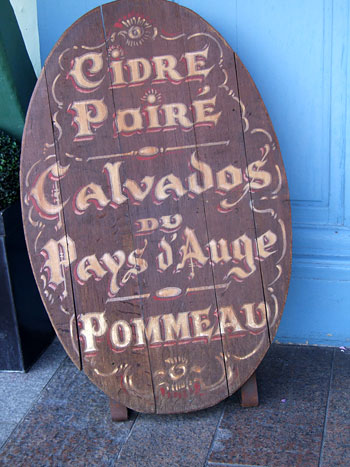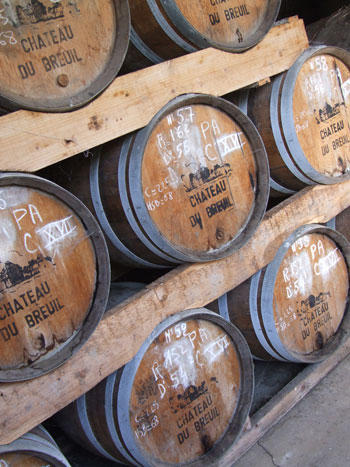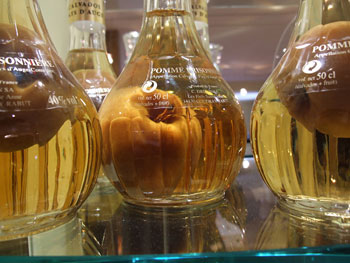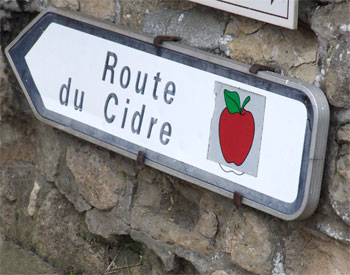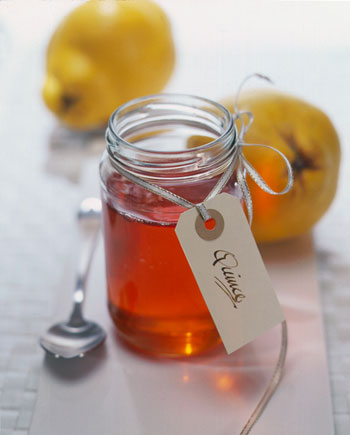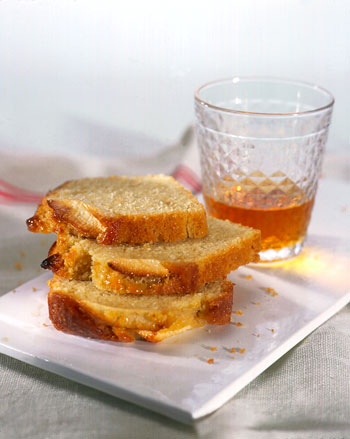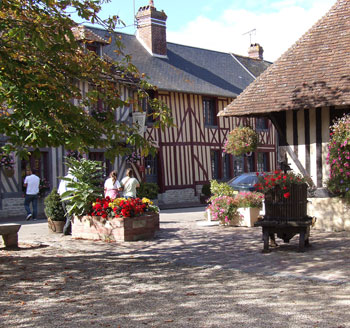QUINCE AND CALVADOS JELLY
This beautiful amber coloured jelly, flavoured with Calvados is wonderful with roast goose. It also makes a a l glaze to apple tarts and cakes and a excellent
flavouring to an apple sorbet.
• 1.3kg( 3lb ) quince pips removed
• 1.7litres ( 3pts ) water
• granulated sugar
• 2tbls Calvados
Cut the quince into rough 4cm (11/2in) chunks without removing the skin or cores.
Place in a large saucepan with the water. Bring to boiling point then reduce the heat to a
simmer. Partly cover the pan with a lid and leave the fruit to cook for 11/2 hours until soft, stirring occasionally.
Spoon the contents of the pan into a jelly bag, or muslin tied in a cradle shape suspended over a large bowl and leave to drain overnight. Avoid squeezing the bag or this will impair the clarity of the jelly later.
The following morning, measure the amount of juice and weigh out 450g (1lb) sugar
for every 600ml (1pt) liquid. Pour the juice into a medium sized pan and stir in the sugar. Bring slowly to the boil and stir constantly until the sugar is dissolved.
Cook for 10 minutes until (using a sugar thermometer) setting point occurs at 105C (221F), it's wise to use the saucer test as well: spoon a small pool onto a cold saucer, allow to cool then nudge it with your finger: If it wrinkles and clings to the spot, setting point has been reached (Remove the pan from the heat when you do the saucer test or the jam or jelly liquid may over boil) and produce stiff, gummy results.
Remove from the heat and stir in the Calvados. leave to stand for 10 minutes, then pour into hot jars and seal.
GREEN APPLE SORBET WITH CALVADOS
Serve in a small glass in one scoop and douse with a little Calvados. This is the traditional way of serving it in this region of France.
• 350g (12oz) Bramley apples, peeled cored
• juice of 1 large lemon
• 115g (4oz) Quince and Calvados jelly (as above) or, shop bought quince jelly, lightly melted
• 115g - 140g (4oz - 5oz) caster sugar, depending if you like a tart or more sweet sorbet
• 10fluoz (1/2pt) water
Finely peel and core the apples, then cut them into small pieces. Place the apple, lemon juice and quince jelly in a saucepan. Leave the ingredients to simmer gently, stirring once or twice, until the apple is tender. Remove from the heat and leave to cool. Place the sugar and water in a saucepan and heat gently until the sugar is dissolved. Boil without stirring for 3 minutes. Remove from the heat and leave to cool. Puree the apple and quince mixture and stir into the cooled syrup. Freeze in a shallow metal container until half frozen, hard around the edges and mushy in the centre, take it from the freezer and beat it thoroughly to break down the ice crystals with an electric beater. Return to the freezer until the mixture has the same half frozen appearance as before. Beat again, until smooth, then cover with a double folded lid of kitchen foil and re-freeze until required. Or use an ice cream maker if you have one and follow the manufacturers instructions.
APPLE AND CALVADOS CAKE
This recipe was inspired by Madame Marie Jo Lambert at Les Pommiers de Livaye Guest house (near to Cambremer the start of the Cider route). Whose breakfast room dominated by a huge log fire - exuded warmth and comfort every morning.
Breakfast consisted of a fresh fried egg, a bowl of fromage frais, home made breads with Madame's own fruit conserves and her delicious apple cake fragrant with Calvados,
which is also very good served with a glass of Pommeau at any time of the day.
For this recipe you need one 450g (1lb) French loaf tin, (a long slim loaf tin), lightly greased with butter and lined at the base with non - stick bakewell parchment.
• 115g (4oz) golden caster sugar
• 115g (4oz) self raising flour, sifted
• small pinch of salt
• 115g (4oz) French butter
• 3 fresh free - range eggs (medium size)
• 1tbls Calvados
• 1tsp Nielsen-Massey vanilla extract
• 55g (2oz) finely ground almonds
• 1/2 small French Golden Delicious apple, or Bramley if you prefer a more tart
flavour sliced into 5mm (1/4in) crescents
For the glaze
• 3tbls Quince and Calvados jelly, or apple jelly
• 1 tbls water
• 1tsp freshly squeezed lemon juice
• 2 tbls Calvados
Mix the sugar, sifted flour and salt together in a bowl. Melt but do not brown the butter and set aside. Lightly beat the eggs and mix them into the sugar and flour mixture and gradually add the cooled butter, Calvados, vanilla and the ground almonds. Mix well but not too vigorously. Cover and leave to stand in the refrigerator for 30 minutes - 1 hour.
Spoon the mixture into the cake tin and smooth the top. Lightly press in the apple segments
(peeled or with the skin left on) in an upright position leaving a little space between to allow the mixture to puff up around them. Bake in a preheated oven at 190C/375F/Gas mark 5, for 50 - 60 minutes until a cake skewer inserted into the centre of the cake comes out clean. If necessary cover the cake with baking parchment to stop it over - browning towards the end of cooking. Leave to cool slightly.
For the glaze Add all the ingredients to a small saucepan except for the alcohol and boil rapidly until it slightly thickens. Stir in the alcohol and leave to simmer fairly energetically for about one minute until syrupy. Paint the warm glaze over the top and sides of the cake and leave it to completely cool on a rack. |

